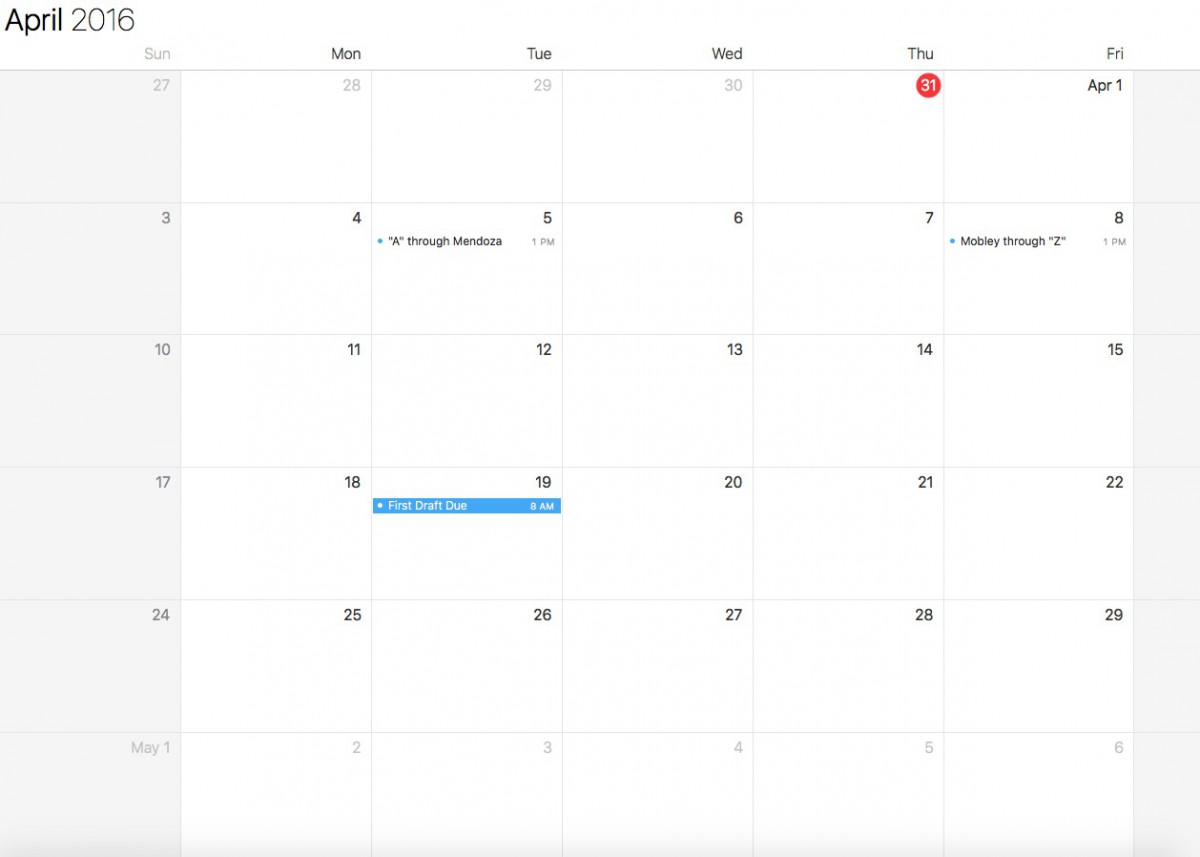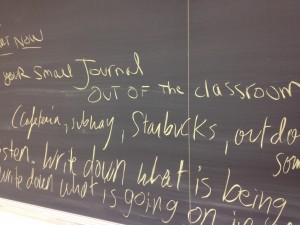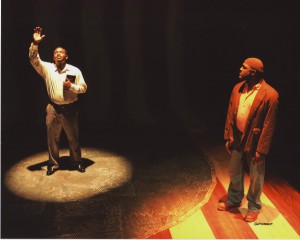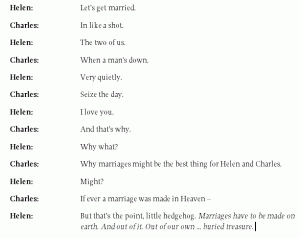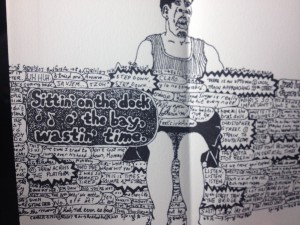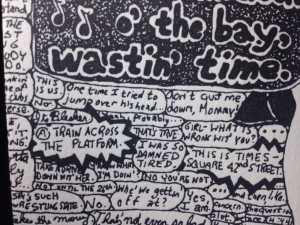Here is the calendar for April, below. “Research Paper Month.”
You will give a 5-minute presentation on your Research Paper topic. The class will respond with help, observations, suggestions. Please keep the idea in mind that you are arriving at a thesis, an opinion, a crux. The class will divide in alphabetical order: “A” through “Mendoza” presents on Tuesday, April 5; Mobley through “Z” presents on April 8. Please be brief and to the point.
Your next due date is April 19: The First Draft of Your Research Paper. No exceptions. We want your thoughts in place before the spring break. Thank you!
Your paper without the word the is due on March 15.
The Paper.
Length: app. 500 words
Format: typed, double spaced.
March 2nd: I enjoyed checking your Journals, and reading your Dialogues. If you need work in grammar and mechanics, continue to do the worksheets I hand out, and put them, once completed, in your Journals. Please try to keep your name on your journals, clearly visible to me, in future; also, many people need to find a better format for integrating what they write in class with printed papers (like the reviews you highlighted, etc.). Again: three-ring binders are good for this… I know that a lot of work was missing because it wasn’t properly culled, assembled….
Today is March 1. Please put your Journals on the Desk. Please take a grammar assignment sheet and begin to complete it while I check your Journals. (The grammar assignment sheet will be put into your Journals for the next journal check, which will be at the end of March.)
Please put any completed Grammar Questionnaires on the desk for me to read. You don’t have to put your name on these. I appreciate your participation in my self survey!!
Your First Journal check day is March 1. Please bring your journals (complete with all short writing assignments, Do Now assignments, etc., plus any handouts) to class for a quick check by the Professor. This Journal is a large part of your Class Participation Grade. : ) Note: You don’t need to re-copy your work for Journal Check Days. Simply put all your work in one place.
Your First Grammar Exercise is due Feb. 19. (see above menu; print it out and complete it.)
Once this exercise is completed, put it in your journal/folder.
Your First Typed Paper Assignment, Due Feb 26. :
Choose a dialogue or conversation (either Inner or Outer or Both) that you have already built/recorded in your Journals. Introduce it with a paragraph that set the context for it so the reader will understand. Transcribe the dialogue/conversation. You can add an extra paragraph anywhere else in this transcription — in the middle, at the end — that adds further commentary or reflection or summation or most importantly tells how you felt about this dialogue — we want to hear your personal takeaway. Any paragraph that you write, and is not plain transcription, should be in italics.
So, your paper might look something like this:
Name of Student: You
Name of Professor: Prof. Schmerler
Title and Section of Class: English 1121 D461
Date: February 26, 2016
[PARAGRAPH OF intro blah blah blah. for example…]This dialogue was observed by me on the A Train between West 4th Street in the Village and 59th Street in Midtown on Feb. 12. Two people got on the train and they sat next to me. One was dressed like a clown (Michael); the other was a lady of about 50 who seemed to know the man previously, but I wasn’t sure…..etc etc etc etc…blah blah.
Sarah: “Why are you on the subway?”
Michael: “Hey, stop being hostile — anyone can ride the subway.”
Sarah: “Michael, you should really get out of the way; that dancer is about to hit you in the face.”
Michael: “Thank you, wrist.”
ETc ETc. ETc.
[Paragraph of further reflection and observation and subjective takeaway]This exchange was punctuated with sounds from the train. It felt absurd, at times. It reminded me of……blah blah blah.
Or, It might look like this:
Scene: The Subway; 17 minutes pass; people get on and off the train. Lots of them start speaking at once, but a group of about 5 people standing near the door are audible. The date is Feb 16, and the subway is the A Train.
“Why are you on the subway?”
“Hey, stop being hostile — anyone can ride the subway.”
“Michael, you should really get out of the way; that dancer is about to hit you in the face.”
“Thank you, wrist.”
There is a woman, around 52 years old, with grey hair and blue glasses, smiling; she eventually gets mad. There is a man, about 40 who seems to know her, though they don’t get on the train together…..
Length of Paper: 500 Words
Due Date: Feb 26
Format: Double-spaced, typed, printed
You don’t necessarily have to use the person’s name, but do try to identify them in some way. When the dialogue overlaps, just keep going. You can also identify that another person is speaking by starting a new line, without identification.
Resources: Your textbook, Rules of Thumb, gives proper typing format for quotations. Please refer to it for guidance on punctuation. Pp 44 – 47.
Here is a link to how plays look, printed. You can use this format, too (also copied, below): http://ptfaculty.gordonstate.edu/lking/CPF_play_formatting2.pdf
A guide for punctuation is available Online at the Purdue Owl Site. If you don’t have Rules of Thumb, use this!:
Purdue Owl Link to Quotation Use
and also pay attention to their nav bar, on the left, for more info.
Excellent dialogue work today, Feb. 9., class.
Dialogue Unit #1
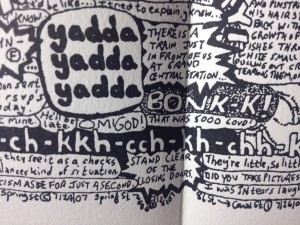 First class, some inspiration for you: Martin Wilner is an artist who works on the subway. He records the things he hears around him — conversations of fellow passengers, sounds — and he even notes, along the bottom of his notebook pages (which combine image and text) the exact times of his subway rides, the train # or letter, and the stops announced by the conductor. He calls his project the “Journal of Evidence Weekly.”
First class, some inspiration for you: Martin Wilner is an artist who works on the subway. He records the things he hears around him — conversations of fellow passengers, sounds — and he even notes, along the bottom of his notebook pages (which combine image and text) the exact times of his subway rides, the train # or letter, and the stops announced by the conductor. He calls his project the “Journal of Evidence Weekly.”
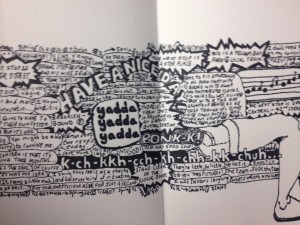 (Here’s an image of that same page, further back.) Wilner also puts, onto the same page, the “inner dialogue” he hears in his head at the same time — stuff he’s thinking to himself, or feeling.
(Here’s an image of that same page, further back.) Wilner also puts, onto the same page, the “inner dialogue” he hears in his head at the same time — stuff he’s thinking to himself, or feeling.
Your Assignment. Make 5 entries of Inner and Outer Dialogues. Please note the time-range/date/and location of each one to keep them clear to yourself. You can work on the subway, in a Starbucks, in the Cafeteria, on a street corner, in any public place, really. You don’t have to draw or make pictures. You do, however, have to take out your “small journals” for this assignment, and, working unobtrusively like Wilner with only your pen, note down or otherwise record the dialogues and speaking you hear around you. At the same time, listen to yourself: how are you thinking/feeling? Note that down, too.
There is no specific length or time limit for each entry. Keep at it as long as you want or need to get good material. It can be anything. So don’t censor yourself.
Bring the results of the first 2 you do to class on Friday, Feb. 5. By Tuesday, Feb. 9, all 5 should be completed. Grading: these will not be given a letter grade, but will be checked and will go in your Journal. Your Journal will constitute 15% of your overall grade (Class Participation). Aspects of this exercise will be incorporated into future, letter-graded assignments.

